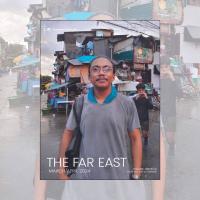
Fr Reg Howard (back row, fourth from right), Bishop Howe (front row, third from left), the last Columban bishop in Burma and his successor, Kachin-born, Bishop Paul Grawng (front row, second from right), the first priest from the Kachin people. He succeeded Bishop Howe as bishop of Myitkyina in March 1977. Photo: St Columbans Mission Society
Picking up a nearly 50-year-old photograph of 14 priests and realising I am the only one still living is a sobering experience. It led me to ponder on my life as I realise it is drawing to a close. Questions come to mind, like my standing before God. What have I done well, or not so well? Regrets?
The promise of the loving mercy of God and my deeply felt need for it takes on a new urgency, as I seek to rid myself of unnecessary possessions and decide what is worth keeping and what is not. Then the further dilemma of what may be of interest or value to relatives, colleagues and friends.
The photograph that triggered this reflection was snapped in 1976. The date was September 29 and the place Rangoon (now Yangon), at that time the capital of Burma (now the Union of Myanmar). The name-changes took place in 1989.
I was on my way to the Philippines for a Columban meeting with representatives from each of the countries where the society works, but the quirks of history had placed the priests in Burma in a quandary. They had first arrived in the country prior to independence in 1947, lived through a declaration of martial law in 1958 and, finally, a coup d’état led by a military general, Ne Win, in 1961, which introduced a dictatorship that, in various forms, has continued until this very day.
Only foreigners who had arrived in the country prior to independence had been allowed to remain and by the time of the meeting in the Philippines, the Columbans, who were in their 60s or 70s, found themselves in a situation that allowed them to leave the country, but not return.
Those who had survived had determined to remain as long as possible to support the infant Church in the northernmost Kachin State.
As a way of involving them in the deliberations of the Philippine meeting, delegates who were able were asked to visit Burma on their way. Seven did so, myself among them. However, we were not allowed to travel north to the Kachin State, so the Columbans travelled to Rangoon to meet us.
While we did talk business, my memories are of their spirit and determination to serve the local people as long as health and age permitted. I found them inspiring, and they did hang on until forced to surrender to advancing age and poor health in 1979.
My few days in Burma were not problem-free, but symptomatic of the challenges my colleagues there faced. My visa was valid for seven days, but flight schedules limited my stay to five. I got off the plane in clerical dress and declared priest as my occupation. This led to a long interrogation by security police before I could join the other Columbans from the same flight who had the nous to turn up in mufti. I left the country as a teacher!
While the photograph does not shed light on any of my queries above, it does give an insight into perhaps a more basic question.
I look back on those days in Burma as some of the most highly privileged of my Columban life and believe the photograph speaks to the fundamental raison d’étre of a missionary society: establish the local Church until it can care for its own people and then move on.
Today, the Kachin State lives under violent repression, but the Church has proven to be a strong support for its beleaguered people through the dedication of the local priests, sisters, catechists, social workers and volunteers who step forward to care for their neighbours. A testament to a Columban bequeathal.
Columban Fr Reg Howard resides in Strathfield, Sydney.
Listen to "An old photograph"
Related links
- Read more from The Far East - January/February 2022

